I’m not one to gush over home improvement products, but Burris Windows have won me over. As a homeowner in Texas, I needed windows that could handle scorching summers, unpredictable storms, and still look sharp.
Burris delivered on all fronts—energy efficiency, durability, and style that doesn’t break the bank. Whether you’re replacing a single window or outfitting your entire home, these windows are a solid investment.
In this article, I’ll share my experience, break down the pros and cons, compare Burris to other brands, and offer maintenance tips to keep your windows pristine.
My Journey With Burris Windows
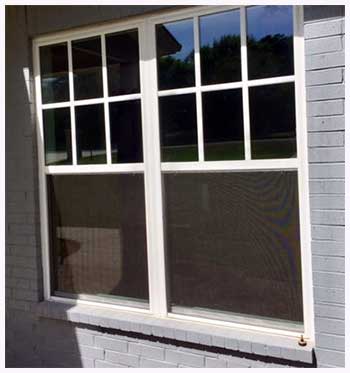
When I decided to replace the 20 windows in my Dallas home, I was overwhelmed by choices.
My old windows, originals from the 1980s, were drafty, faded, and let in more heat than a greenhouse.
I wanted something that would lower my energy bills, withstand Texas weather, and not make me cringe every time I looked at my house.
After researching local brands, I landed on Burris Windows, a Carrollton-based company with a reputation for quality vinyl windows.
I chose their TectView EX series, drawn to its energy-efficient glass and sleek design.
The installation process was smoother than I expected. The crew from a local dealer arrived on time, measured everything down to an eighth of an inch for a perfect fit, and had the job done in two days. No mess, no drama.
The first thing I noticed post-installation was how quiet my house became—traffic noise from the nearby highway was suddenly a whisper. My air conditioner wasn’t running nonstop either, which was a relief during a brutal July heatwave.
The windows opened and closed effortlessly, and the tilt-in sashes made cleaning a breeze. I even got compliments from neighbors on how sharp the white vinyl frames looked against my brick exterior.
One hiccup? The initial quote was higher than I’d hoped, but after getting bids from three other companies, Burris was competitive for the quality. I’ve now had these windows for over a year, and they’ve held up through storms, hail, and relentless sun.
My energy bills dropped by about 20%, and I’m still thrilled with how they’ve transformed my home’s look and feel. Burris wasn’t just a purchase; it was an upgrade to my daily life.
The Pros of Burris Windows
- Energy Efficiency That Saves You Money
Living in Texas, where summer feels like the surface of the sun, energy efficiency is non-negotiable. Burris Windows, especially the TectView EX and CA series, come with Cardinal LoĒ³-366 glass and argon gas filling.
This combo acts like a thermal shield, reflecting heat in summer and keeping warmth in during those rare chilly months. My energy bills dropped noticeably—about $800 less last year compared to my old windows.
The U-factor on these windows can hit as low as 0.27, which is stellar for keeping your home comfortable without overworking your HVAC. Plus, they meet Energy Star’s “Most Efficient” rating, meaning you might score tax credits over time.
- Durability That Stands Up to Mother Nature
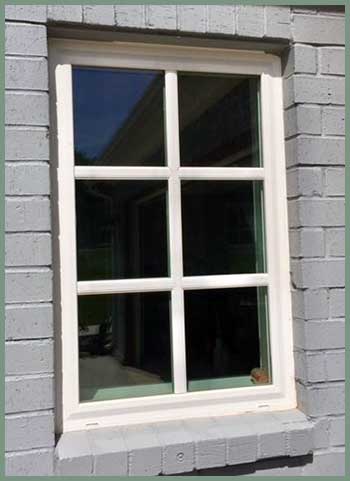
Burris uses Veka vinyl extrusions, which are tough as nails.
These windows don’t warp, rot, or fade, even when Texas throws its worst at them—think hailstorms and 100-degree days.
The reinforced meeting rails add extra stability, so I never worry about my windows buckling under pressure.
After a particularly nasty storm last spring, I checked every window, and not a single one showed damage.
The lifetime warranty on vinyl components against chipping, cracking, or peeling gives me peace of mind that these windows are built to last.
- Easy Maintenance for Busy Homeowners
I’m not the type to spend weekends scrubbing windows, and Burris gets that. Their vinyl frames are low-maintenance—no painting or staining required. The tilt-in sashes on double-hung and single-hung models let you clean both sides of the glass from inside your home.
A quick wipe with soap and water keeps the frames looking fresh. I’ve only cleaned mine twice in a year, and they still gleam like new. The hardware, like constant-force balance systems, ensures smooth operation without needing constant tweaks.
- Custom Fit for Any Home
Burris offers windows in 1/8-inch increments, so they fit your openings like a glove. This precision matters in older homes like mine, where nothing is perfectly square. Whether you need casement, sliding, or picture windows, Burris has options to match your style.
I went with a mix of double-hung and fixed windows, and the uniform look ties my home’s exterior together beautifully. You can also choose from classic styles or more unique shapes for the TectView EX, giving you flexibility without overwhelming choices.
- Aesthetic Appeal Without the Fuss
Let’s talk looks—Burris windows don’t scream “budget.” The clean lines and slim profiles give my home a modern edge, and the color options (white, tan, clay) blend seamlessly with most exteriors. I picked white to keep things crisp, but the tan option was tempting for a warmer vibe.
The TectView EX even offers decorative glass options for privacy or flair. My living room picture window now feels like a statement piece, letting in light while keeping my home cool.
The Not-So-Good Parts of Burris Windows
- Limited Color Options
While I love the clean look of my white Burris windows, the color palette is a bit restrictive. You’re stuck with white, tan, clay, or a bronze/white combo (except for the TectView EX, which skips the bronze).
If you’re dreaming of bold hues or wood-like finishes, you’ll need to look elsewhere. I didn’t mind, but my neighbor, who wanted a custom sage green, was disappointed and went with another brand. Burris could step up their game here to compete with brands offering broader customization.
- Not the Top-Tier Choice
Burris makes solid windows, but they’re not in the same league as premium brands like Andersen or Pella. Their vinyl frames are reliable, but they don’t have the high-end feel of fiberglass or composite materials.
If you’re after top-of-the-line insulation or ultra-sleek designs, Burris might feel a step below. For my needs, they hit the sweet spot of quality and affordability, but if you’re building a luxury home, you might want to explore pricier options.
- Warranty Limitations
The Limited Lifetime Warranty sounds great—and it is for vinyl frames, hardware, and glass seal failures. But it doesn’t cover labor for repairs or replacements, which can add up if something goes wrong.
Damage from improper use or natural disasters isn’t included either, so you’ll need to be diligent about installation and maintenance. I haven’t had to test the warranty yet, but knowing labor costs are on me makes me a little cautious. Some competitors offer more comprehensive coverage, including installation labor.
- Regional Availability
Burris only sells in Texas, Oklahoma, and Louisiana, which is fine if you live in those states but a dealbreaker otherwise. I’m in Dallas, so it was a no-brainer, but friends in Colorado couldn’t even consider Burris.
This limited reach means you’re out of luck if you move or want to recommend them to family elsewhere. It also makes getting quotes trickier if you’re not near a major city like Dallas or Fort Worth, as dealers aren’t as widespread as national brands.
- Installation Dependence
While my installation went smoothly, Burris windows are only as good as the crew putting them in. They don’t offer direct installation services, so you’re relying on local dealers. A friend in Louisiana had a less-than-stellar experience with a sloppy installer, which caused minor leaks until fixed.
I’d recommend vetting your contractor carefully—ask for references and check reviews. Burris’s quality can shine, but a bad install can undermine even the best windows.
Maintenance Tips For Burris Windows
- Regular Cleaning for Sparkling Glass
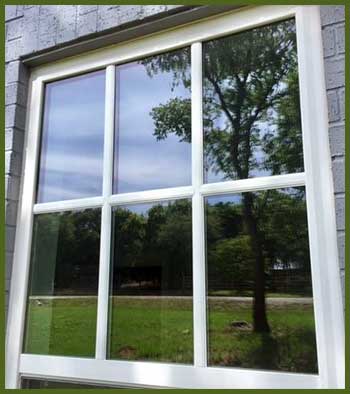
Keeping your Burris windows looking pristine is easy, but you’ve got to stay on top of it.
I clean mine every six months, and it takes less than an hour for my whole house.
Use a mild dish soap mixed with water and a soft cloth or sponge to wipe down the glass.
Avoid abrasive cleaners or scrubbers—they can scratch the Low-E coating.
For the exterior, the tilt-in sashes are a lifesaver; just tilt them inward and clean from inside.
A quick rinse with a hose works for stubborn dirt, but don’t use a pressure washer—it can damage seals.
- Frame Care to Prevent Wear
The vinyl frames are low-maintenance, but they’re not invincible. I wipe mine down with a damp cloth and mild detergent whenever I clean the glass. Avoid harsh chemicals like bleach or ammonia, which can discolor the vinyl.
Check for dirt buildup in the corners or tracks, especially on sliding windows, and use a soft brush to clear it out. I noticed a bit of dust in my window tracks after a windy spring, and a quick brush kept everything smooth. This small effort keeps your frames looking new and functioning perfectly.
- Inspecting Seals and Weatherstripping
Burris’s argon-filled glass and tight seals are key to their energy efficiency, but they need occasional checks. Every few months, I inspect the weatherstripping around my windows for cracks or wear.
If you spot damage, contact your installer for replacements—don’t try to DIY this, as improper fixes can cause leaks. I also check the caulking around the exterior frames after big storms. A small bead of silicone caulk can seal minor gaps, but call a pro for anything major.
This keeps your windows airtight and your energy bills low.
- Lubricating Hardware for Smooth Operation
The constant-force balance systems and hardware on Burris windows are built to last, but a little TLC goes a long way. Once a year, I apply a silicone-based lubricant to the hinges and tracks of my casement and sliding windows. It keeps everything gliding smoothly and prevents sticking.
Don’t overdo it—a light spray is enough. I learned this the hard way when I got a bit zealous and had to wipe off excess lube. Check your folding handles too; a quick tightening with a screwdriver can prevent wobbles.
- Seasonal Checks for Longevity
Texas weather can be brutal, so I do a seasonal walk-around to spot issues early. Before summer, I check for cracks or chips in the glass, especially after hail season. Winter is a good time to ensure the windows close tightly and don’t let in drafts.
If you notice condensation between the panes, it’s a sign of a seal failure—call Burris for a warranty claim. These quick checks take 10 minutes and can save you from costly repairs. My windows have stayed flawless because I don’t skip this step.
Comparing Burris To Other Window Brands
When I was shopping for windows, I got quotes from MI Windows, Interstate Windows, CGI Windows, and Thermo-Tech Windows to see how they stacked up against Burris. Each brand has its strengths, but here’s how Burris holds its own in key areas.
- Burris Vs. MI Windows: Value and Efficiency
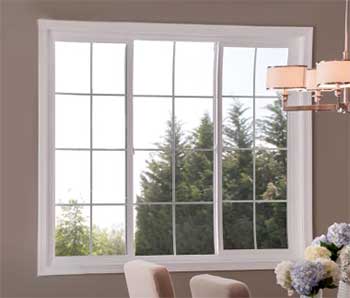
MI Windows, a national brand, offers vinyl windows like Burris, with their 1650 series being a close match to Burris’s TectView EX.
Both use Low-E glass and argon fill, but Burris’s Cardinal LoĒ³-366 glass edges out MI’s with a slightly better U-factor (0.27 vs. 0.30).
MI’s pricing was about 10% lower for my 20-window project, but their frames felt less sturdy during demos.
Burris’s lifetime warranty on vinyl components also beats MI’s 10-year limited warranty.
If you’re outside Burris’s Texas-Oklahoma-Louisiana region, MI’s wider availability is a plus, but Burris wins for quality and longevity in my book.
- Burris Vs. Interstate Windows: Durability and Design
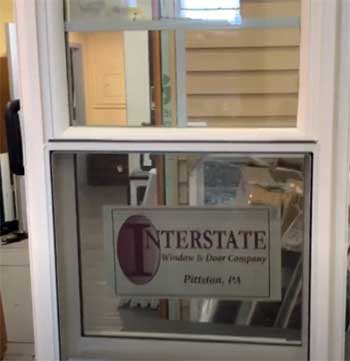
Interstate Windows, another vinyl-focused brand, is big in the South and competes closely with Burris.
Their 8300 series offers similar energy efficiency, but Burris’s reinforced meeting rails and Veka vinyl gave me more confidence against Texas storms.
Interstate’s color options are broader, including woodgrain finishes, which Burris lacks.
However, Interstate’s quote was nearly identical to Burris’s, and their warranty (lifetime on frames, 20 years on glass) is comparable.
I chose Burris for its sleeker design and custom sizing in 1/8-inch increments, which Interstate doesn’t match. If you want more aesthetic variety, Interstate might pull ahead.
- Burris Vs. CGI Windows: Storm Protection
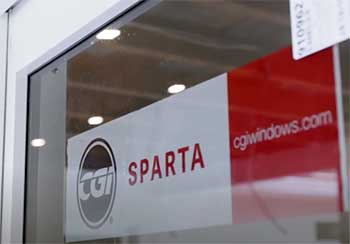
CGI Windows specializes in impact-resistant windows, perfect for hurricane-prone areas.
Their Sentinel series uses laminated glass, which Burris doesn’t offer as standard.
CGI’s windows are pricier—my quote was 25% higher than Burris’s—and their aluminum frames feel less modern than Burris’s vinyl.
For coastal Louisiana homeowners, CGI’s storm protection is a game-changer, but in Dallas, Burris’s durability was plenty for hail and high winds.
CGI’s warranty (10 years) is shorter than Burris’s lifetime coverage. Unless you need hurricane-grade windows, Burris offers better value for everyday durability.
- Burris Vs. Thermo-Tech Window: Customization and Cost
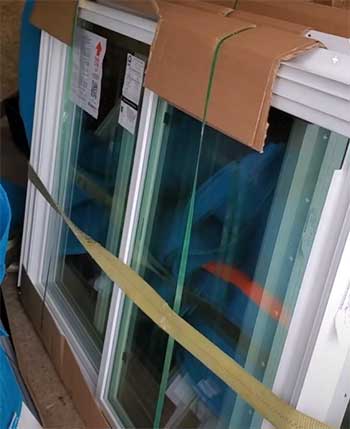
Thermo-Tech Window, a Midwest brand with a Texas presence, focuses on vinyl and fiberglass windows.
Their Classic series is energy-efficient, but Burris’s TectView EX has a slight edge in U-factor and solar heat gain coefficient.
Thermo-Tech’s fiberglass options are more durable than Burris’s vinyl but cost 30% more per window.
Their customization is robust, with more frame colors than Burris’s limited palette.
Thermo-Tech’s warranty (20 years on glass, lifetime on frames) matches Burris, but their higher price pushed me toward Burris.
If budget isn’t a concern and you want fiberglass, Thermo-Tech is tempting; otherwise, Burris delivers similar performance for less.
Burris shines for homeowners like me who want a balance of affordability, efficiency, and durability. It’s not the flashiest brand, but its local focus and precise fit make it a standout in its service area.
Frequently Asked Questions (FAQ)
Burris windows are a solid choice for homeowners in Texas, Oklahoma, and Louisiana. Their TectView EX, CA, and AC series offer great energy efficiency with Cardinal LoĒ³-366 glass and argon filling, cutting heating and cooling costs by up to 30-40%. The vinyl frames are durable, low-maintenance, and backed by a lifetime warranty. While not top-tier like Pella or Andersen, they deliver excellent value, earning a 4/5 rating from users like me for quality and affordability.
No, Pella does not own Burris Windows. Burris is a family-owned company based in Carrollton, Texas, operating independently since the 1990s. While some dealers, like Optimal Windows in Plano, sell both Burris and Pella products, the two brands are separate entities with distinct manufacturing and design approaches. Burris focuses on vinyl, while Pella offers fiberglass and wood options.
Burris is a top contender for value, offering energy-efficient vinyl windows at a lower price than premium brands like Andersen or Pella. Their TectView series competes with Milgard and NT Windows, with quotes often 20-25% less than Milgard’s similar offerings. For my 20-window project, Burris saved me thousands compared to Andersen without sacrificing much performance. If you’re on a budget but want durability and efficiency, Burris is hard to beat.
Burris offers a Limited Lifetime Warranty covering vinyl frames, hardware, and insulating glass units, including seal failures. It protects against defects in materials and workmanship, but labor costs for repairs or replacements aren’t included. Damage from improper use, acts of God, or foundation shifts isn’t covered either. I’ve found their customer service responsive for warranty questions, but you’ll need a skilled installer to avoid issues not covered by the warranty.
Why Burris Windows Are My Go-To Choice?
After living with Burris Windows for over a year, I can say they’re a game-changer. They’ve slashed my energy bills, stood up to Texas storms, and made my home look sharper than ever.
The low maintenance and custom fit make them perfect for busy homeowners who want quality without the hassle.
If you’re in Texas, Oklahoma, or Louisiana, get a quote for Burris—you won’t regret it. They’re proof you don’t need to spend a fortune for windows that perform and last.
